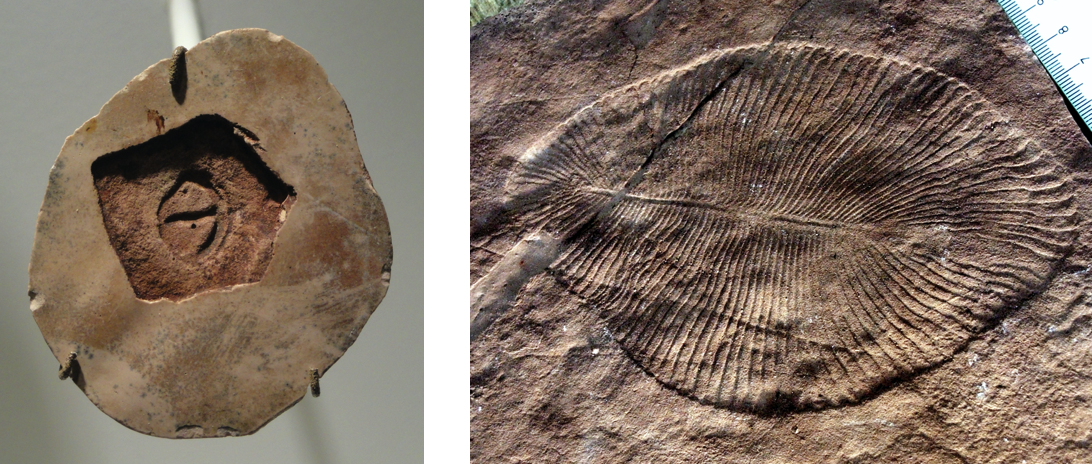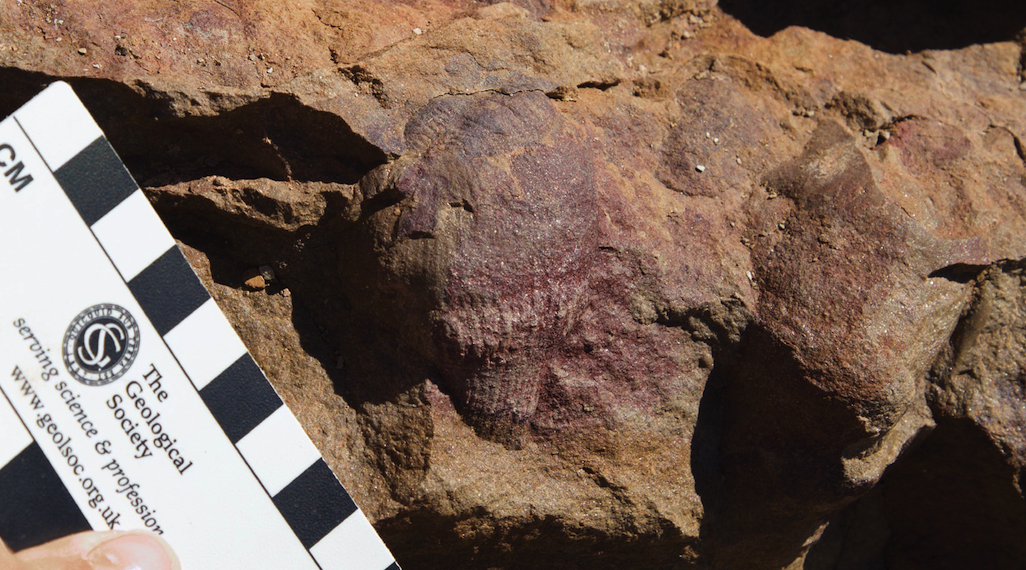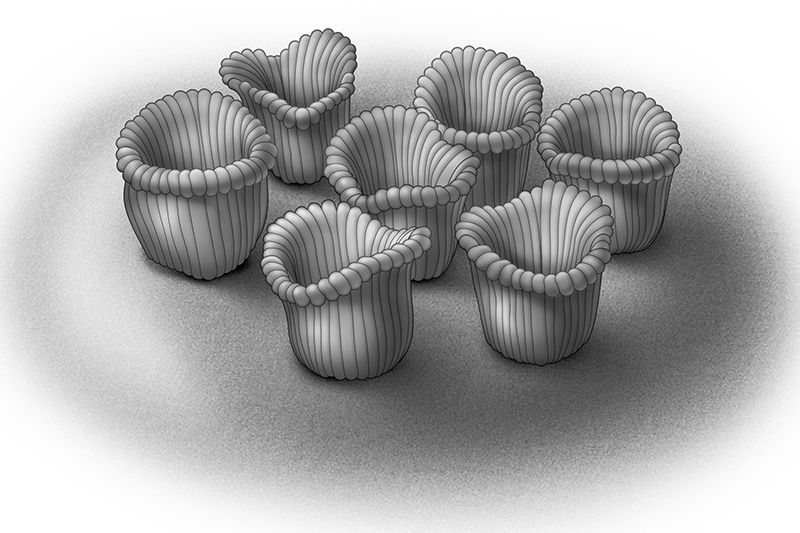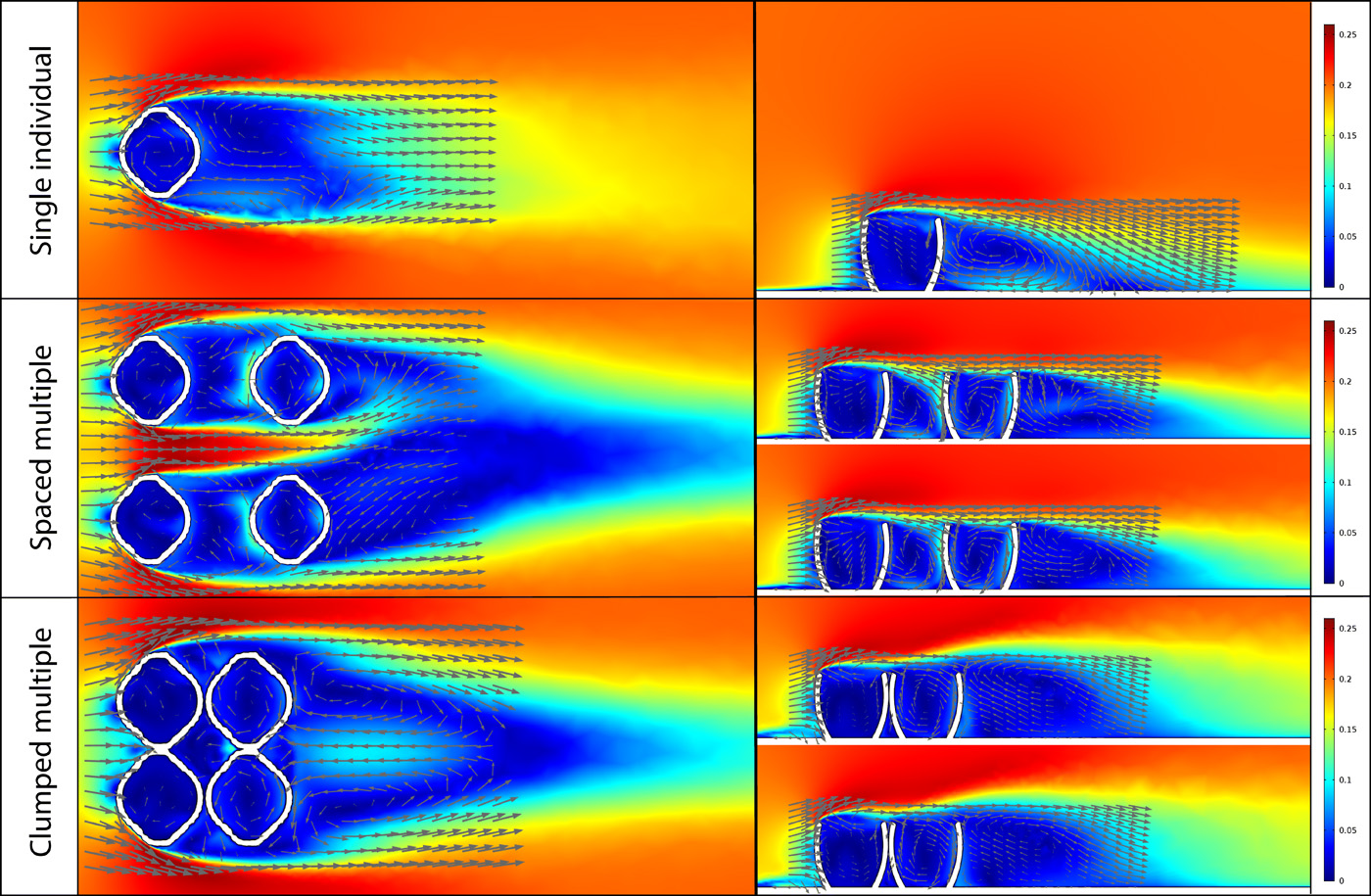
In 2016, a team of researchers from across the world trekked to Namibia, located on Africa’s southwest coast. Vast landscapes of desert and dry air surrounded them. Although they were in the home of a wide variety of wildlife — from zebras and wild horses to cheetahs and lions — they were on the lookout for other, more ancient lifeforms: Ediacaran fossils.
Finding Ediacara Biota
Fossils from the Ediacaran Period — the ‘Ediacara biota’ — are the world’s earliest known large, multicellular lifeforms. Many of these organisms lived sessile on the seafloor during the Ediacaran Period (635 million to 541 millions years ago), a period that predates the Cambrian explosion.
Examples of Ediacara biota include Parvancorina, Charnia, Kimberella, and Dickinsonia.

Left: A Parvancorina fossil. Image made available under the Creative Commons CC0 1.0, via Wikimedia Commons. Right: A Dickinsonia fossil. Image licensed under GNU Free Documentation License via Wikimedia Commons.
By studying the fossils of these ancient creatures (and comparing them with the fossils of animals around today), paleontologists can learn how they behaved, moved, and fed during their lifetime. With this knowledge, they can determine the best placement for these organisms on the eukaryotic tree of life.
On the Ground in Namibia
In 2016 in southern Namibia, a global research team from Canada, Namibia, the United States, and the United Kingdom discovered populations of Ernietta — an enigmatic organism known from the latest Ediacaran — preserved in-place on the fossil seafloor. They shared their studies on these fossils in a 2019 paper published in Science Advances.
When recalling this finding, Brandt Gibson, lead author of the study, said: “Usually in Namibia, we find fossils that are transported i.e., that have been swept away by currents and deposited together elsewhere, preventing us from understanding how they were actually living. In this case, however, they definitely looked as though they were preserved in life-position, and that we had a pristine, undisturbed population in front of us.”

An image of a well-preserved Ernietta fossil. Photo credit: Marc Laflamme, University of Toronto.
Based on the position of the found fossils, the researchers concluded that these stationary organisms lived on ocean floors, halfway buried in sediment. “Ernietta are soft bodied; they don’t actually have hard parts. The fact that we found soft-bodied fossils in life position is exceedingly rare,” said Gibson.
In addition, the fossils were found in clusters, suggesting that they lived in organized, purposeful populations.

Illustration of an Ernietta community. Image courtesy of Vanderbilt University.
In their work, the team analyzed the feeding behavior of these early lifeforms using computational fluid dynamics (CFD) simulation with the COMSOL Multiphysics® software. Many modern animals living in oceans have evolved, complex body shapes that interact with moving fluids in a way that helps them feed; CFD simulations thus provide a way to study and interpret ancient fossils that have few analogues in the present day. “Simulations really help. They allow us to hypothesis test and look at morphologies that we can’t study any other way,” said Gibson.
Suspension Feeding and Simulation
Research suggests much of the Ediacara biota fed through either osmotrophy or suspension feeding. Organisms that use osmotrophy passively consume organic materials, while suspension feeders use water flow, their structures, and their surrounding community to obtain nutrients. (Muscles, oysters, and jellyfish are a few examples of suspension feeders.)
Based on the Ernietta fossils, the researchers hypothesized that these creatures predominantly used suspension feeding, as suspension feeders commonly live in clusters. “Suspension feeding is a widespread and incredibly important animal behavior in modern oceans. If we can pinpoint that Ernietta were indeed suspension feeding, that lends a bit more credit that a lot of other Ediacara biota were capable of suspension feeding as well, and shows us that these sophisticated feeding behaviors evolved much earlier than we thought,” said Gibson.
First, the researchers analyzed fluid flow around a model of an individual Ernietta organism using CFD simulation. In doing so, they observed that there was “consistent and strong recirculation within the central cavity of the organism, regardless of the burial depth, current velocity, and orientation with respect to flow, as expected if Ernietta was a suspension feeder.” (Ref. 1) Based on these results, the researchers concluded that Ernietta obtained most of their nutrients in their central cavity.
Next, they subjected variable water flow around clumped and well-spaced communities of Ernietta models living up- and downstream. From these simulations, the researchers inferred that these clusters worked together to manipulate water flow, ensure sufficient nutrients for all, and export waste away from their community. “The idea that we could actually reconstruct how these organisms may have been affecting one another 550 million years ago is an astounding thing for us,” said Gibson.

CFD simulation results in horizontal (left) and vertical (right) cross sections for a single Ernietta model (top), a well-spaced population of Ernietta models (middle), and a clumped population of Ernietta models (bottom). Note: All models are oriented parallel to the flow with a moderate burial depth. In addition, all simulations were performed with an inlet velocity of 0.2 m/s. Copyright © B. M. Gibson et al., from their paper, “Gregarious suspension feeding in a modular Ediacaran organism”.
Overall, this work indicates that Ernietta were suspension feeders that lived in tight-knit populations. “The more information that we have about the individual groups of organisms alive during the Ediacaran period, the greater the understanding we have about Ediacara biota as a whole,” said Gibson.
Final Thoughts
Gibson notes that studying ancient organisms, such as Ernietta, is inherently challenging work. Therefore, he believes it is essential to collaborate with a research team that consists of individuals specialized in different areas of expertise when analyzing such organisms. “For this research, I worked with engineers, theoretical fluid mechanists, and people who have been using simulation and designing their own turbulence models for years — and I think we were a better research team for it,” said Gibson.
Further Reading
- Learn more about the research discussed here:
- Read the full research paper: “Gregarious suspension feeding in a modular Ediacaran organism“
- Check out a related Phys.org article
- Learn about other ways researchers are using simulation to investigate underwater organisms:
Reference
- B. M. Gibson et al., “Gregarious suspension feeding in a modular Ediacaran organism”, Science Advances, vol. 5, no. 6, 2019.


Comments (0)